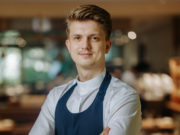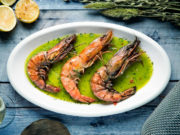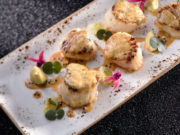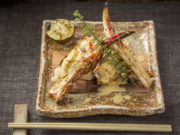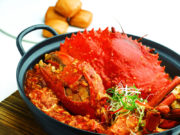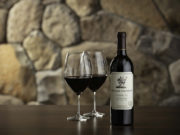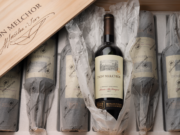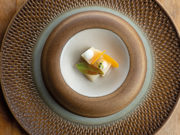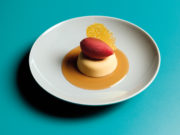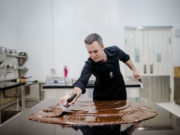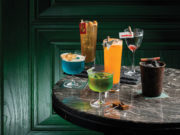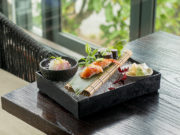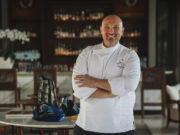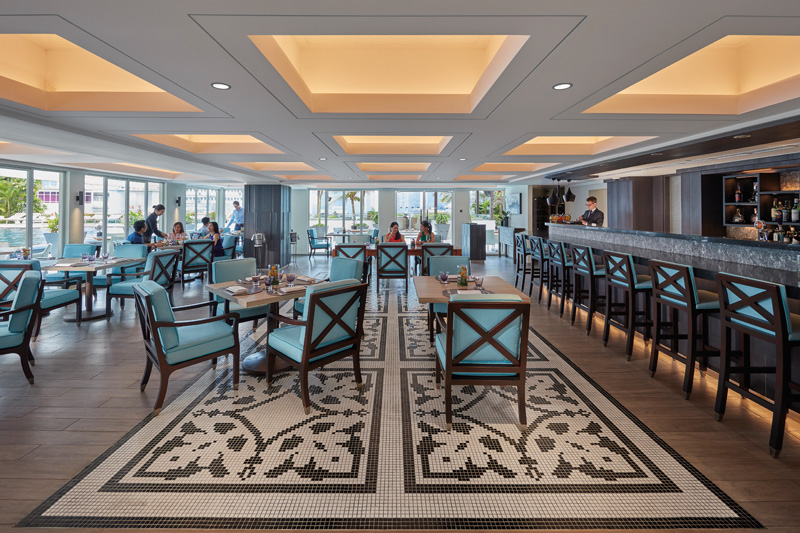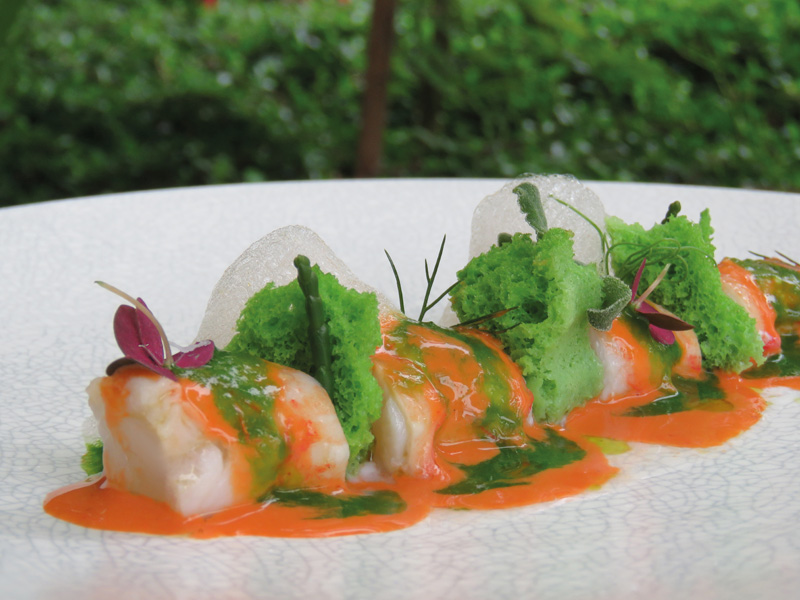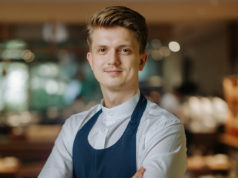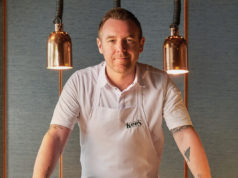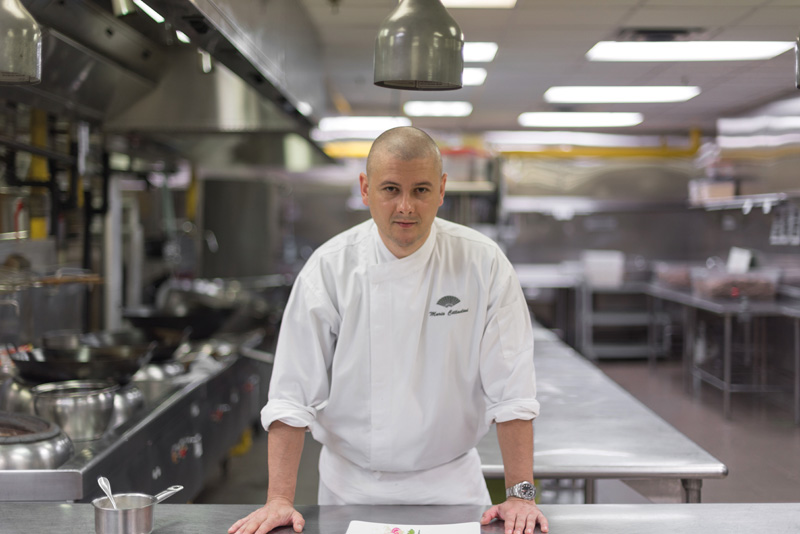
Raised in Tuscany, Italy, Mario Cittadini’s culinary journey has taken him to fine dining restaurants around the world, from Norway, to Spain, Australia and China. His intense passion for food, wine and travel has seen him explore both modern and traditional techniques and styles, developing new twists and surprises for diners by concentrating on the use of premium ingredients and fully bringing out their natural flavours.
E: You are passionate about food, wine and travel, how did that start?
Mario Cittadini: Growing up in a small town in Italy’s Arezzo province, the curiosity to explore and discover the world and its different cuisines was always part of me. Italy’s colourful culture inspired a magical journey that ignited my passion to expand my knowledge and create quality cuisine.
E: You are known for your talent for turning normal ingredients into something special, how do you do that?
M: Besides being a firm believer in using premium ingredients, I believe that one must respect the ingredient by preserving its natural flavour. The key is to focus on the flavour profile of each ingredient to obtain authentic yet superior tastes, thus avoiding excessive cooking processes or over the top fusion tastes that denaturalise the very essence of an ingredient.
E: Have you learned new cooking skills and found new ingredients as you’ve worked around the world? Can you give us some examples?
M: Definitely, the myriad new ingredients, techniques and gestures from kitchens around the world are endless. Chef gestures are what I find the most intriguing and are a summary of many years of training passed down from generation to generation. An example is the traditional skill set of a Japanese chef filleting a fish in comparison to a Chinese chef’s methods to achieve the same. Though they are very simple practices in a kitchen, they reflect different cultures, both of which I have had the privilege to experience.
E: You were chef and co-owner of Ristorante Il Postale, which was awarded one Michelin star. What made you move from that to working in hotels?
M: Independent fine dining restaurants in Europe are often small entities with teams of 15 to 18 employees, while this was thoroughly enjoyable, the allure of varied experiences motivated me to try a larger organisation. Mandarin Oriental hotels have long been renowned for their excellence and innovation in food and beverage with 14 Michelin-starred restaurants in the group’s portfolio and a total of 21 Michelin stars. This is more than any other hotel brand in the world and resonated with my professional career ambitions.
E: You use modern culinary styles to create new twists in dishes to keep things interesting for diners. Can you give us an example of how that works?
M: One dish showcasing this would have to be a twist to classic pasta using traditional Alfredo sauce. Instead of tossing the pasta in butter, pasta water and cheese, I extracted the essence of Parmigiano Reggiano by combining two parts of the cheese to one part of water. This reduction intensifies the taste and packs in a punch of flavours. The fluid is then injected into delicate morsels of tortellini, which results in a sophisticated element of surprise for guests.
E: At Mandarin Oriental, Singapore you’re in charge of restaurants offering a wide range of cuisines. How do manage that and help them each develop their own distinct style?
M: Defining a clear aim for all the Mandarin Oriental, Singapore award-winning restaurants, which is to deliver guest needs and create delightful moments, is an advantage that guides and develops the team. Be it at Melt Café, Cherry Garden, Dolce Vita or Axis Bar and Lounge, my mantra is to give all the chefs the room to be creative within their area and create a climate of enthusiasm and empowerment. The result is great teamwork and wonderful bespoke ideas.
E: Do you have a favourite part of being an executive chef?
M: Creating memorable dining experiences with a large multinational team is the most rewarding aspect of being an executive chef at Mandarin Oriental, Singapore. There is much to learn and glean from day to day.
E: What’s your favourite thing to eat in the hotel and outside the hotel?
M: Chicken rice! A succulent plate of steamed chicken served on fragrant rice with some light soy sauce is simplicity at its best. Topped with sprigs of coriander leaf and sesame oil, accompanied by a chilli dip, it is a meal I could savour daily.
E: How do you spend your time off?
M: I spend time outdoors to unwind, such as cycling through Gardens by the Bay, which also helps me to draw inspiration from nature to incorporate into my dishes.
Poached Boston Lobster with Plum Vinegar
Ingredients
- 500g Boston lobster, two pieces
- 300g sea asparagus
- 50g sea lettuce
- umeboshi vinegar
- 4g xantana gum
- 100g extra virgin olive oil
- 5g spirulina
- oxalis cress
- dill oil
- 4g sea salt
- sea asparagus sponge
Preparation method for lobster
- Tie the lobster tail to the lobster head with a cord to keep the body straight.
- Steam the lobster for three minutes.
- Separate the tail and claw meat.
- Cut the head in half, scoop out the offal and put aside.
- Cut the lobster tail into halves.
Preparation method for lobster sauce
- In a casserole, sauté the lobster claw meat and offal together.
- Blend in a thermomixer adding 2g xantana and 50g olive oil till sauce is silky smooth and fragrant. Season to taste with salt. Strain well and cool. Set aside.
Preparation method for plankton sauce
- Blanch the sea asparagus and sea lettuce in boiling water for a few seconds.
- Blend together in a thermomixer with 2g xantana and spirulina until smooth.
Sea Asparagus Sponge
Ingredients
- 3 eggs
- 200g plankton purée
- 2 tbsp lemon or lime juice
- 70g flour
- 5g baking powder
- 2g salt
Preparation method for sea asparagus sponge
- Blend all the ingredients together in a thermomixer.
- Transfer to syphon gun and charge with two capsule of N2O.
- Spray in a paper container.
- Microwave for 30 seconds at
- maximum power.
- Once cooked, cool the sponge with the cup upside down.
Plating
- Slice the lobster into three parts and brush lightly with olive oil.
- Lay on the plate leaving a gap between lobster tail pieces.
- Dress each lobster slice with 1 teaspoon of lobster sauce and a few drops of plankton sauce.
- Insert a crumble of sponge in each gap.
- Drizzle a few drops of umeboshi vinegar and dill oil on the bottom of each lobster slice.
- Garnish with sea asparagus tips and oxalis cress, sprinkle with a few flakes of sea salt.
5 Raffles Ave,
Singapore 039797


